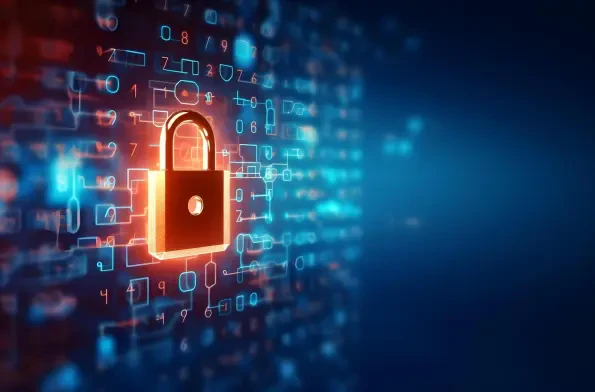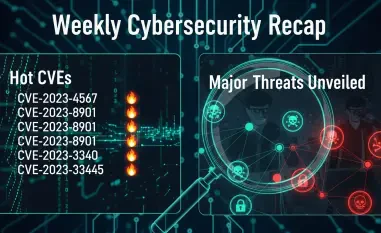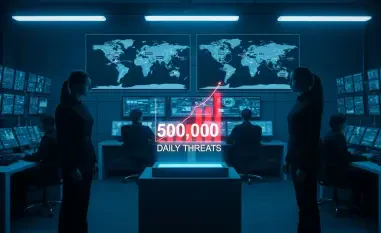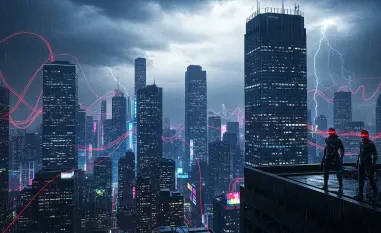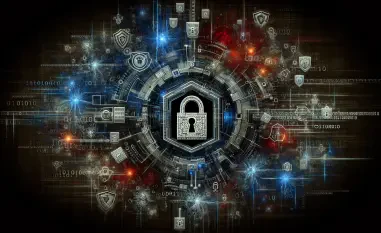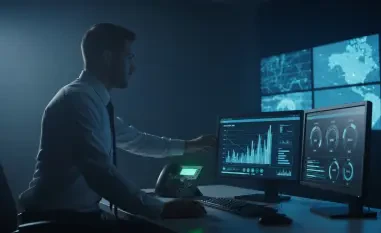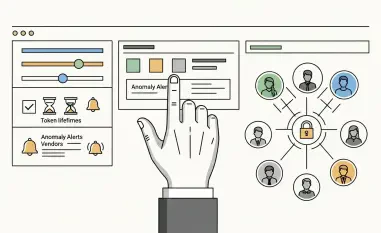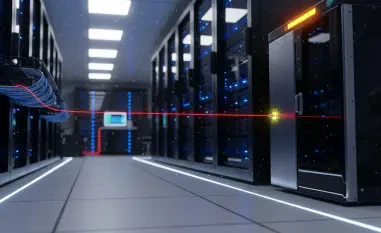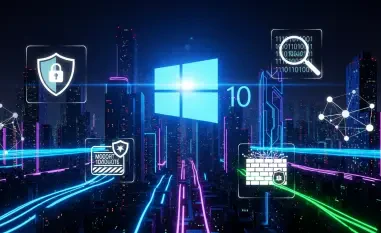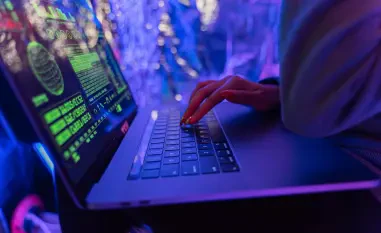In the current era of digital warfare, Malik Haidar stands out as a keen mind in deciphering and mitigating complex cyber threats. With years of experience straddling the realms of cybersecurity and business strategy, Malik brings unique insights into the risks involving state-sponsored hacking activities. In this conversation, we delve into the intricate dynamics of Iranian cyber threats following recent geopolitical developments.
What specific events led to the heightened risk of Iranian cyber-attacks as reported by the US government?
The increased risk of Iranian cyber-attacks primarily stems from the recent US military strikes on Iranian nuclear facilities. Such military actions often serve as a catalyst, prompting retaliatory activities from state-sponsored entities. Iran, known for its sophisticated cyber capabilities, may see this as an opportune moment to target US enterprises as part of its broader geopolitical strategy.
Can you explain the key points from the National Terrorism Advisory System Bulletin issued by the DHS on June 22?
The bulletin highlights a heightened threat landscape in the United States, emphasizing both physical and cyber threats. It warns of probable low-level attacks by pro-Iranian hacktivists. Additionally, it outlines the potential for cyber actors linked to the Iranian government to execute broader cyber-attacks on US networks. The advisory underscores the need for vigilance given these escalated risks.
How has the ongoing conflict involving Iran affected cyber threats targeted at the US?
The conflict has led to an intensified focus on US targets by Iranian cyber actors. Cyber warfare has become an integral tool in geopolitical discourses, allowing Iran to leverage cyber capabilities to disrupt or intimidate perceived adversaries. This conflict heightens the threat against US infrastructure, as retaliation can often blur the lines between physical and digital arenas.
Could you elaborate on the significance of the US military strikes on Iranian nuclear facilities and their potential repercussions?
The strikes represent a critical escalation in tensions, not just militarily but also digitally. They may incite Iranian cyber retaliation against US interests. Such actions could prompt strategic cyber campaigns aimed at disrupting critical US infrastructure or stealing sensitive information without embarking on full-blown physical warfare.
How does the DHS define “low-level cyber-attacks,” and who are the likely perpetrators?
“Low-level cyber-attacks” generally refer to disruptive but not critically damaging activities. These could include defacements, distributed denial-of-service (DDoS) attacks, or simple intrusions. Typically, such attacks might be orchestrated by hacktivist groups with political motivations rather than state-sponsored entities aiming for strategic impact.
What physical and cyber threats do US citizens face following the military engagement with Iran?
Following military engagements, there’s an increased likelihood of violence from radicalized individuals prompted by ideological or religious motivations. In cyberspace, the threat extends to infrastructure and personal data, with potential harms encompassing power grids, financial systems, and personal information breaches.
How might Iranian leadership influence retaliatory actions against US targets?
Iranian leadership plays a pivotal role through strategic directives that could leverage cyber capabilities as a form of retaliation. Political or religious edicts might incentivize or authorize structured cyber-attacks, impacting US entities at various levels, from critical infrastructure to individual citizens.
What patterns of cyber-attacks carried out by Iranian actors have been observed in the past?
Historically, Iranian cyber actors have shown a penchant for targeting critical infrastructure and engaging in cyber espionage. There’s a recurring pattern of targeting sectors such as energy, finance, and government, often utilizing tactics like spear-phishing, credential theft, and malware to achieve their objectives.
How have Western officials and governments reacted to prior Iranian cyber activities?
Western governments have typically responded with a mix of public condemnations, sanctions, and cybersecurity advisories. These actions aim to deter further aggression and protect national interests by highlighting potential threats and reinforcing international cyber norms.
What were the specific incidents involving Iranian cyber-attacks on US critical infrastructure mentioned in the DHS advisory?
The advisory references Iranian cyber-attacks on critical infrastructure sectors, specifically pointing to an attack on Israeli PLC manufacturers. These logic controllers are essential to the water sector, emphasizing the targeted, infrastructure-oriented nature of Iranian cyber operations.
How were the sanctions against the IRGC-CEC determined, and what prompted their implementation?
Sanctions were applied in response to evidence implicating the IRGC-CEC in destabilizing cyber activities, notably against infrastructure entities. Such sanctions are strategic, aiming to curb the influence and resources of cyber units perpetuating these threats.
Can you provide insights into the Iran-backed cyber campaign targeting multiple infrastructure sectors in October 2024?
This campaign highlighted Iran’s use of advanced hacking techniques, such as brute force attacks, to penetrate various sectors including energy, water, and transportation. The widespread nature of these attacks underscored Iran’s capability to simultaneously compromise multiple systems, shedding light on their operational scope and objectives.
How did Iranian state-backed actors attempt to disrupt the US Presidential election in November 2024?
In the lead-up to the election, Iranian actors targeted campaign infrastructure, aiming to manipulate narrative and sow discord among voters. These efforts included hacking campaign websites and leveraging social media to create disinformation, reflecting a broader strategy to impede democratic processes.
What are some known methods used by Iranian cyber actors to target political figures and candidates?
Iranian cyber actors often employ spear-phishing, social media manipulation, and malware deployment to compromise political figures. These tactics enable them to harvest sensitive data, which may be used for espionage, blackmail, or to influence political outcomes.
How should US organizations prepare for the likelihood of Iranian cyber-attacks following recent geopolitical developments?
US organizations should enhance their cyber defenses by adopting a proactive approach. This includes implementing robust security protocols, monitoring for unusual activities, and conducting regular cybersecurity awareness training for staff. Staying informed on emerging threats is also crucial for preparedness.
Could you discuss the impact and effectiveness of Iran’s disruptive cyber-attacks?
Iran’s disruptive attacks often vary in impact; while sometimes overstated, they can still lead to significant operational disruptions, loss of sensitive information, and reputational damage. The psychological ramifications can amplify their immediate effects, serving Iran’s strategic interests.
What preventive measures should organizations take to guard against potential cyber threats from Iran?
Organizations should maintain comprehensive incident response plans, implement multi-factor authentication, conduct regular security audits, and ensure all systems are up-to-date with security patches. Educating employees about phishing and social engineering tactics can further bolster defenses.
How do Iranian cyberespionage activities gather geopolitical insight and target specific individuals?
Cyberespionage activities involve targeting key figures and institutions to extract valuable geopolitical intelligence. By infiltrating communication channels and information repositories, Iranian actors can acquire insights that inform their strategic or political maneuvers.
What role does social engineering play in the targeting strategies of Iranian cyber actors?
Social engineering is pivotal, allowing Iranian actors to exploit human vulnerabilities. By manipulating trust and inducing actions that compromise security, such as credential sharing, they can gain access to otherwise secure systems, highlighting an ongoing vulnerability in many organizations.
What sectors or types of organizations could be indirectly targeted by Iranian cyberespionage?
Indirect targets often include telecoms, hospitality, and transportation sectors, whose data can aid in tracking or profiling individuals. By infiltrating these areas, Iranian actors can indirectly collect information necessary for more precise targeting of personae of interest.
Do you have any advice for our readers?
In an era marked by complex cyber threat landscapes, staying informed and proactive is vital. Individuals and organizations alike must prioritize cybersecurity as an ongoing practice, rather than a one-time solution. Remaining vigilant and adaptive to evolving threats will be crucial in safeguarding against potential attacks.
